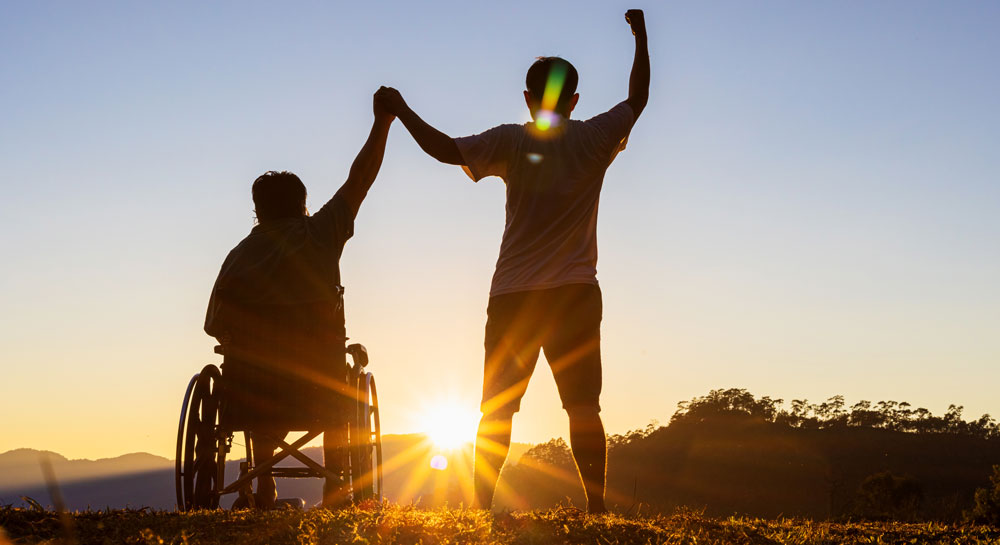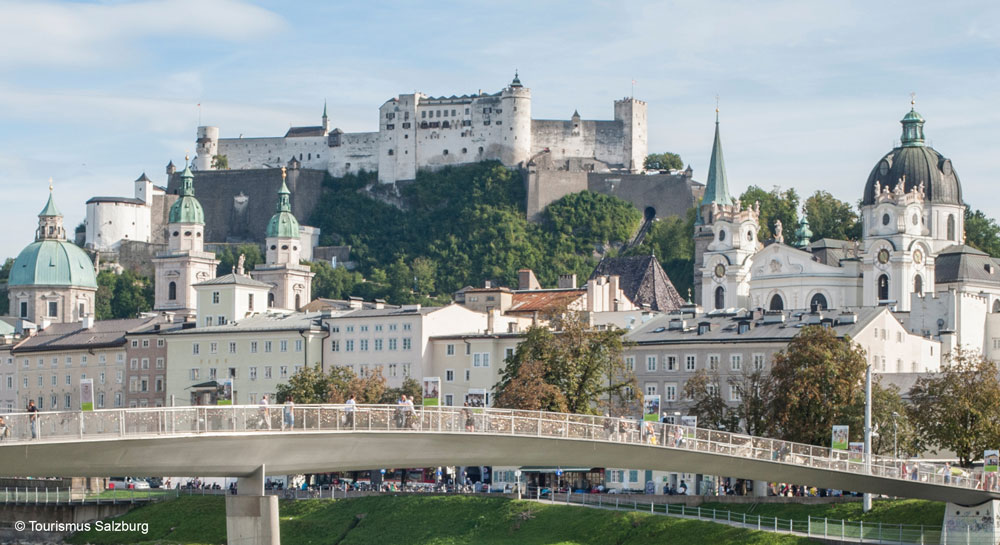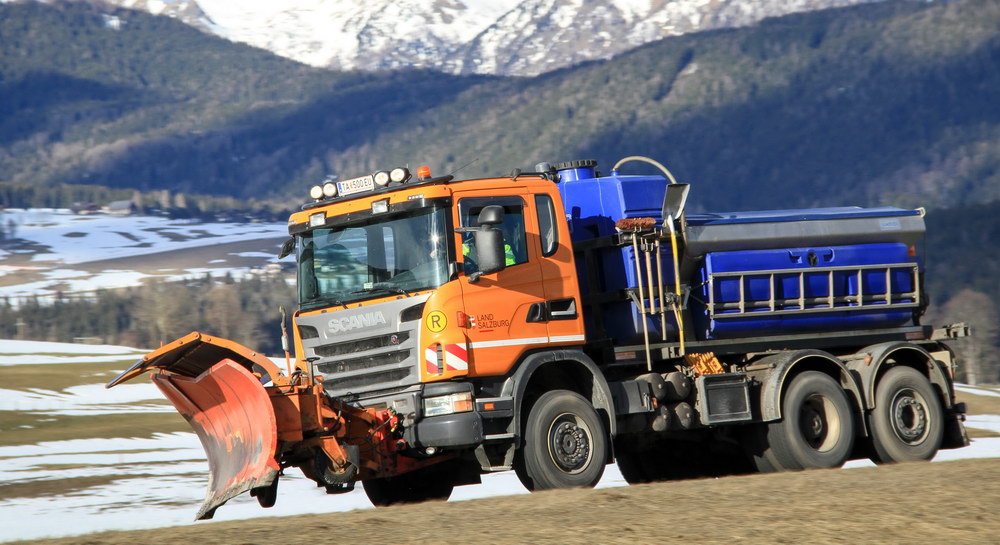
Guidelines for inclusive tourism
The Interreg project GATE “Granting Accessible Tourism for Everyone” aimed to give people with disabilities better access to natural environments, especially hiking trails, nature parks and other attractions in the Alpine area. Measures for inclusive tourism improve access for all and also contribute to regional development. Key guidelines have been formulated to make this a success.
An accessible environment is indispensable for ten percent of the population, helpful for 30 to 40 percent and comfortable for one hundred percent! Until the 2000s, the term “Tourism for All” was primarily understood to mean measures for guests with disabilities. Corresponding offers were seen as a small but cost-intensive niche market. Today, far greater importance is attached to accessibility, because the offers provide added value for everyone! With barrier-free offers, broad target groups can be addressed, as they are readily accepted by people with severe, minor and no impairments. Locals also benefit from inclusive tourism.
Groups of people with special needs
Accessibility is in the interest of all people and therefore cannot be assigned to one group of people alone. However, surveys usually distinguish the following groups of travellers with special needs:
- Senior citizens (65 years and older) with age-related impairments with regard to activities, who make up about two thirds of all those affected;
- Younger persons (up to 64 years of age) with various impairments with regard to mobility, vision, hearing or even learning ability;
- People without impairments but with difficulties in travelling, such as families with small children in particular. In addition, pregnant women or people with injuries, for example, have special temporary requirements.
Goals and guiding principles
The aim of the GATE Guidelines for Inclusive Tourism is to improve the accessibility of natural and cultural areas in the Alpine and Pre-Alpine regions through accessibility. This is to uncover the great potential of inclusive tourism and to use it for regional development. The guidelines are addressed to regional and local administrations, disability associations, civil society organisations, tourism service providers and natural/cultural heritage institutions.
The GATE guidelines are structured according to three main guiding principles:
- Inclusive together: Realise inclusive tourism together, through the participation of all stakeholders.
- Removing barriers: Provide accessible and reliable information on regional offers and barrier-free mobility on site.
- Experience nature: Enable visitors to experience nature with barrier-free hiking trails, parks and other attractions.
Guidelines for inclusive tourism
#1 Inclusive together
a. Regional development strategy
Inclusive tourism requires a comprehensive range of accessible facilities and services. This requires a long-term and coordinated development strategy. Central control and coordination of measures, with clear responsibility for sub-projects, is necessary. As many development partners, service providers and other stakeholders as possible should be involved.
b. Overall package of accessible tourism
For a comprehensive barrier-free stay, a package must be put together for the entire tourism service chain: Accommodation, restaurants, local transport (buses, cable cars), tourist attractions, hiking trails, specialised services (such as rental of assistive devices, care services, holiday dialysis services), etc.
c. Networking and partnerships
A key success factor in achieving an inclusive destination is the strengthening of regional and local networks and partnerships.
d. Participation of target groups
Accessible projects should be developed, implemented and evaluated together with stakeholders from the very beginning. Persons with disabilities have first-hand know-how and can best assess whether a tourism offer meets their requirements.
e. Awareness raising and qualification
In order to develop inclusive tourism, it is often still necessary to raise awareness and sensitise service providers to the needs and wishes of people with disabilities.
#2 Removing barriers
a. Labelling of accessibility
Clear labelling on which disabilities a tourist offer is actually suitable for enables interested visitors to find their way around.
b. Accessible web applications and content
Accessible web applications and content are governed by the detailed guidelines of the World Wide Web Consortium (WCAG 2.0). Some simple requirements are: Suitable for all common web browsers, clear menu navigation, all functionalities can also be used via the keyboard; easy-to-understand texts (“easy to read”), the possibility to enlarge fonts; contrasting colour design, illustrations with deposited, descriptive text (to be read by screen readers), videos provided with subtitles; only offer accessible PDF documents and forms for download.
c. Accessible mobility on site
The possibility to move around within the destination as barrier-free as possible is seen by people with disabilities as particularly important and at the same time as often difficult.
#3 Experience nature
a. Physical accessibility of hiking trails
Destinations in the Alpine region should adapt at least part of their offers to the needs of people with disabilities and enable them to use them as independently as possible. Depending on the type and extent of the disability, there are different requirements: Total length, gradients, path width and ground conditions.
b. Multisensory signs for information and orientation
There are many ways to make nature experiences more accessible and safer for all visitors by using multi-sensory signs for information and orientation: Guidance systems, information boards, signs, etc. that provide information and orientation through different senses, i.e. visual (sight), auditory (hearing), audio-visual (hearing and sight) and tactile (touch). Examples are area and walking signs with tactile elements, guidelines and markings on the ground, information in Braille on boards or railings, as well as multimedia guides or information stations, iBeacons in the terrain for information on objects, etc.
c. Accessible infrastructure
In addition to physical accessibility and coherent labelling, the planning of barrier-free outdoor experiences must of course also take into account infrastructure requirements: Parking spaces or accessibility by public transport, accessibility of buildings, sanitary facilities and rest areas.
The complete document can be downloaded free of charge online:
GATE was funded within the framework of the Interreg Programme V-A Italy-Austria. Project partners: Dolomites UNESCO Foundation (management), Social Cooperative independent L. (Merano), Municipality of Santorso, Alpago Section of the Italian Alpine Association, University of Innsbruck (Research Centre Tourism & Leisure) and Salzburg Research.






